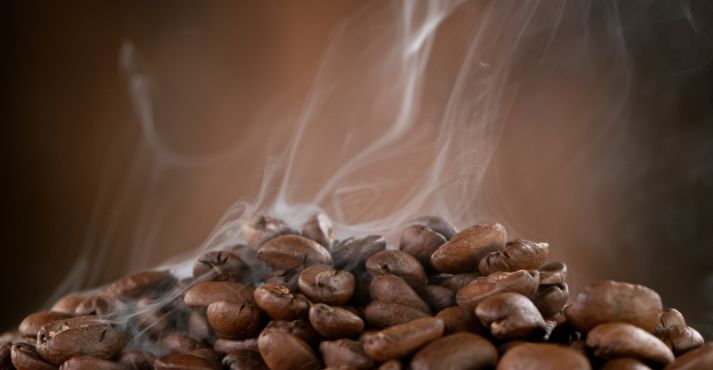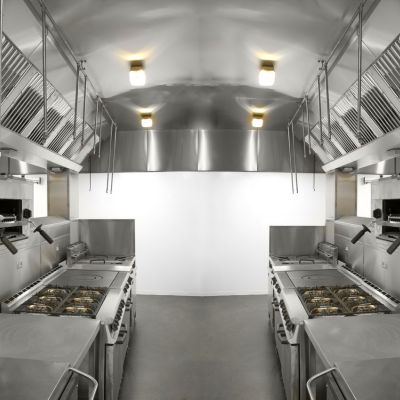Over the last 30 years, demand for coffee has grown steadily, leading to an expansion in production and exports. The coffee market worldwide is projected to grow by 3.54% (2024-2028), resulting in a market volume of US$108.9 billion in 2028.
Robusta coffee is one of the two main species of coffee beans, alongside Arabica. The global Robusta coffee production in 2023-2024 amounted to 74 million 60-kilogram bags.
The popularity of Robusta coffee is surging due to its bold flavor, resilience to pests, and climate adaptability. It contains more caffeine than Arabica; Robusta coffee beans are considered superior in taste. According to World Coffee Research, Robusta makes up more than 40% of coffee worldwide.
Robusta coffee’s increased demand reflects the changing tastes of consumers and the importance of sustaining coffee production while tackling environmental challenges.
So, what is robusta coffee? Let’s explore the origin and regions where Robusta coffee is cultivated.
What is Robusta Coffee?

Robusta coffee, also known scientifically as Coffea canephora, is a species of coffee known for its intense flavor, higher caffeine content, and resistance to pests and diseases.
Robusta plants typically have a greater crop yield, contain higher levels of caffeine, lower levels of sugar, higher levels of soluble solids, and are less susceptible to damaging pests and diseases. Robusta beans are often used in espresso blends and instant coffee due to their bold taste and ability to hold the processing methods.
So, where are Robusta coffee beans cultivated? The top global producers of robusta are currently Vietnam, Brazil, Indonesia, Uganda, and India, which together produce over 90% of the world’s robusta.
Vietnam has positioned itself as one of the world’s leading coffee producers and exporters, second place behind Brazil. The country produced approximately 26.3 million 60-kilogram bags of Robusta coffee during the 2022/23 production period.
Brazil accounts for nearly half of the world’s coffee output, producing 16.8 million bags of coffee in 2023. Coffee is produced in 14 regions in Brazil, in the central coffee-growing cluster of states.
According to World Coffee Research, Uganda is known primarily for robusta production, with over 1.8 million households growing coffee, and coffee contributes nearly a third of the country’s export earnings.
Indonesia is another leading coffee producer, exporting most of its coffee beans. The country produced ten million 60kg bags of Robusta coffee in 2022 and 2023. Indonesia’s coffee market revenue is expected to reach US$4 billion by 2028.
India’s coffee legacy traces back to ancient times as far as the 16th century. Robusta production in India amounted to 4,420 thousand 60 kilogram bags in 2022/2023.
Approximately 90% of the Robusta coffee grown in these regions is produced for export to other countries such as Germany, Italy, and the United States for commercial coffee blends.
Characteristics of Robusta Coffee
Robusta coffee, scientifically known as Coffea canephora, is a coffee variety celebrated for its unique characteristics. Robusta stands apart in the coffee industry from its flavor to where it thrives.
Flavor Profile
Robusta coffee is renowned for its bold and robust flavor. It carries a deep, earthy taste, often accompanied by nutty or woody undertones. Robusta’s taste profile is more straightforward than its counterpart, Arabica, which boasts a broad range of flavors. It tends to be noticeably bitter, making it a popular choice for those who enjoy a stronger and more intense coffee experience.
Aroma
The aroma of Robusta coffee is distinctively different from Arabica. It tends to have a somewhat astringent aroma, which is less fragrant and floral than Arabica’s delicate scents. Robusta’s aroma is often described as earthy or woody, reflecting its hearty flavor.
Caffeine Content
One of the key characteristics that sets Robusta coffee apart is its high caffeine content. Robusta beans typically contain around 2.2-2.7% caffeine by weight, significantly more than Arabica’s 1.2-1.5%. This elevated caffeine level contributes to the coffee’s bitterness and boldness. It also makes Robusta beans more robust against pests and diseases, as caffeine acts as a natural pesticide.
Growing Regions
Robusta coffee has a global presence, primarily thriving in regions where Arabica faces challenges due to climatic conditions or susceptibility to pests and diseases. Some of the notable Robusta-growing regions include:
Vietnam: Vietnam is the largest producer of Robusta coffee globally. Its favorable climate and extensive cultivation make it a coffee powerhouse, with Robusta beans significantly contributing.
Brazil: While Brazil is renowned for its Arabica production, it also cultivates Robusta coffee, particularly in the southern regions. Robusta beans here are used in various coffee blends.
Indonesia: In Indonesia, notably in regions like Sumatra, Robusta coffee finds its place alongside Arabica cultivation. The unique processing methods contribute to its distinct flavor.
Africa: Some African countries, like Uganda and Ivory Coast, also cultivate Robusta coffee, often alongside Arabica.
Robusta coffee’s characteristics encompass a bold and bitter flavor, distinctive aroma, high caffeine content, and a propensity to flourish in regions where Arabica faces challenges.
Its unique attributes make it an essential component in various coffee blends and cater to those who prefer a more robust and intense coffee experience.
Arabica vs. Robusta: What’s the Difference?

Arabica and Robusta take the top places in the coffee industry worldwide and appeal to very different palates.
Arabica is a species of coffee (Coffea arabica) known for its mild flavor, aromatic qualities, and acidity. It’s the most popular type of coffee, known for its complex flavors and smoothness. Robusta is characterized by its strong, sometimes harsh flavor and higher caffeine content.
Arabica is often considered more popular and synonymous with excellent quality; however, Robusta coffee has unique characteristics that make it stand out.
1. Flavor Profile
Arabica high-quality beans taste slightly sweet with floral notes and fruity, berry aromas. They tend to have a higher acidity than Robusta beans, which gives them a winey tone. When swallowed, there will be a bitter taste called the aftertaste of coffee.
Robusta coffee has a more pungent taste with earthy or woody undertones and a bitter flavor. The intensity of these taste and aroma characteristics is primarily determined by the degree of roasting.
2. Caffeine Content
According to the research study, Arabica beans have around 1.2-1.5% caffeine content per bean. The lower caffeine content contributes to Arabica’s milder flavor profile and is often preferred by those sensitive to caffeine or who prefer a smoother coffee experience.
Robusta coffee generally contains higher caffeine levels, typically having about 2.2-2.7% caffeine content. The caffeine content of the Arabica bean is roughly half that of the Robusta bean. The higher caffeine concentration lends Robusta its characteristic bold flavor and more robust taste.
3. Growing Conditions
Arabica coffee plants prefer tropical climates close to the equator. They can be cultivated in higher altitudes with cooler temperatures and ample rainfall. It’s cultivated in regions with altitudes ranging from 600 to 2000 meters.
Robusta coffee, on the other hand, is grown at lower altitudes, typically between 200 to 800 meters, in warmer climates with consistent temperatures and less precipitation. Robusta tends to be a hardier, more disease-resistant bean than Arabica, which is less expensive to maintain and produces a higher yield.
4. Bean Appearance
Arabica beans are typically more giant and have a more elongated shape than Robusta beans, which are smaller and more rounded. They have a smoother surface with a noticeable crease, or cleft, running along one side of the bean. Arabica beans often exhibit a range of colors, from light green when unripe to dark red or brown when fully mature.
On the other hand, Robusta beans are smaller and more rounded and can appear more irregular with a rougher texture. Robusta beans have a rougher texture, with a thicker outer layer, sometimes giving them a more rugged appearance. They typically have a straighter crease or no crease compared to Arabica beans. Robusta beans also tend to have a darker coloration, ranging from light brown to almost black, depending on the degree of roasting.
5. Price and Market Demand
Arabica coffee generally has a higher price in the market due to its superior flavor profile and perceived quality. It’s in higher demand among specialty coffee enthusiasts and takes a significant share in the global coffee market. At the same time, Robusta coffee is priced lower and has a strong demand in the commercial sector.
This perception influences consumer preferences and willingness to pay premium prices for Arabica beans, especially in the specialty coffee segment. Crop failures or reduced yields due to adverse weather conditions may lead to price fluctuations and market demand.
Benefits and Uses of Robusta Coffee
With its unique characteristics, Robusta coffee offers a range of benefits and finds applications in various coffee products. Here, we delve into the advantages and uses of this robust coffee variety:
1. Bold Flavor and Richness
Robusta coffee is celebrated for its bold and robust flavor profile. Its distinctive taste, characterized by a deep, earthy undertone with nutty or woody notes, contributes to a more intense and bitter coffee experience. This boldness is preferred for those who relish a robust coffee flavor.
2. High Caffeine Content
Robusta beans contain significantly higher caffeine levels compared to Arabica. This elevated caffeine content contributes to its bitterness and boosts energy, making it a favored choice for those seeking a potent coffee kick.
3. Espresso Blends
Robusta’s strong and bitter character makes it an ideal candidate for espresso blends. When combined with Arabica beans, it adds body and a luscious crema to espresso shots. Espresso enthusiasts appreciate Robusta for the depth it brings to their favorite coffee beverages.
4. Instant Coffee
Robusta coffee is frequently used in instant coffee production. Its robust flavor and caffeine content ensure that instant coffee retains a bold and satisfying taste even after the freeze-drying or spray-drying process. This convenience appeals to many coffee drinkers who appreciate a quick and robust cup of coffee.
5. Coffee Blends
Robusta coffee plays a crucial role in various coffee blends. Its strong character can balance Arabica’s more delicate and nuanced flavors, creating a well-rounded blend. These blends cater to a diverse range of coffee preferences and can be found in both commercial and specialty coffee markets.
6. Cost-Effectiveness
Robusta coffee beans are often more affordable than Arabica. This cost-effectiveness makes it a valuable choice for businesses looking to maintain quality while managing their coffee-related expenses.
7. Pest and Disease Resistance
Robusta coffee plants have a higher natural resistance to pests and diseases thanks to their elevated caffeine content. This resilience reduces the need for chemical pesticides and contributes to more sustainable coffee farming practices.
Robusta Coffee in the Specialty Coffee Industry
According to statistics published on Business Wire, the global specialty coffee market is expected to reach US$ 51,404.0 million by 2030, expanding at 11.3% CAGR from 2023 to 2030.
There have been many changes to the global specialty coffee sector over the past decade. Robusta coffee is increasingly finding its place in the specialty coffee movement due to its unique flavor profile and potential for innovation. The demand for higher-quality coffee and more innovative beverages are the key drivers of rapid change in the sector.

However, there are some misconceptions about Robusta coffee among coffee enthusiasts, such as:
- Harsh taste: Robusta is often associated with a strong, bitter flavor, but its taste can vary widely based on factors like roast level and origin.
- Lower quality: While perceived as inferior, Robusta can offer distinct flavors and attributes that those seeking a bold coffee experience appreciate.
- Lack of complexity: Robusta is sometimes considered less complex than Arabica, yet it can exhibit unique flavor notes and characteristics.
- Inferior to Arabica: Robusta’s differences don’t equate to inferiority; its resilience and flavor profile make it valuable in specific coffee blends and applications.
- Only suitable for blends: Robusta’s bold flavor and higher caffeine content make it an excellent choice for standalone brews, not just blends.
- Limited specialty applications: While less common, Robusta is finding its place in specialty coffee circles due to its unique flavor profile and potential for experimentation.
- Not environmentally friendly: Robusta’s hardiness and resistance to pests can reduce the need for chemical inputs, potentially making it more environmentally sustainable in some contexts.
- Inferior growing conditions: Robusta grows in lower altitudes and warmer climates, offering a resilient option for regions where Arabica struggles to grow.
- Limited flavor diversity: While generally bolder, Robusta beans can exhibit a wide range of flavors, from earthy and woody to fruity and spicy, depending on various factors.
The shift of Robusta coffee in the specialty market reflects a growing appreciation for coffee diversity and a willingness to challenge perceptions about Robusta’s role in specialty coffee. Specialty roasters are experimenting with Robusta beans, showcasing their unique attributes and potential for creating complex and flavorful brews.
Impact of Robusta Coffee on the Coffee Industry
With its distinct characteristics and versatility, Robusta coffee plays a significant role in the global coffee industry. Here, we dive into its economic significance, contributions to coffee production, and how businesses, including restaurants and hotels, can stay abreast of industry trends through trade events.
1. Economic Significance
Robusta coffee represents a substantial portion of the coffee industry’s economic value. Its cost-effectiveness makes it a vital component in the coffee supply chain, ensuring affordability for both consumers and businesses. This affordability contributes to the accessibility of coffee as a global beverage.
2. Global Coffee Supply
Robusta coffee is a key player in global coffee production. It thrives in regions with specific climate conditions, such as low-altitude tropical climates. Countries in Southeast Asia, Africa, and South America are among the top producers of Robusta beans. Its robust growth and resistance to pests make it a reliable source of coffee supply.
3. Espresso Blends
Robusta’s contribution to espresso blends cannot be understated. Espresso, a staple in coffee culture worldwide, often incorporates Robusta beans to provide body and crema to the shots. The combination of Robusta and Arabica beans is a common choice in creating well-balanced and flavorful espresso.
4. Instant Coffee
The instant coffee market relies on Robusta for its affordability and ability to retain flavor during processing. Instant coffee is a convenient choice for many consumers, and Robusta’s presence ensures that it maintains a strong coffee taste even after undergoing the production process.
5. Trade Events and Trends
Staying updated with industry trends, including restaurants and hotels, is vital for businesses. Trade events and coffee exhibitions offer an excellent platform to connect with coffee producers, roasters, and equipment suppliers.
By participating in such events, businesses can discover the latest trends in coffee, including the use of Robusta in specialty coffee blends or the emergence of sustainable practices in coffee farming.
Conclusion
In conclusion, Robusta coffee plays an integral role in the coffee industry economically and in terms of production. Its affordability, contribution to espresso blends, and presence in the instant coffee market make it a valuable coffee variety.
Restaurants and hotels keen on offering diverse coffee experiences should keep an eye on industry trends by participating in trade events, where they can network and gain insights into the evolving world of coffee.








